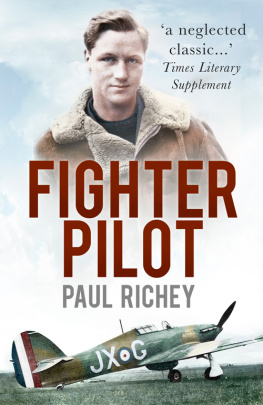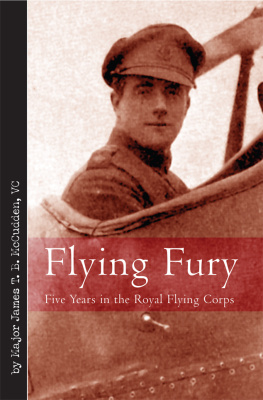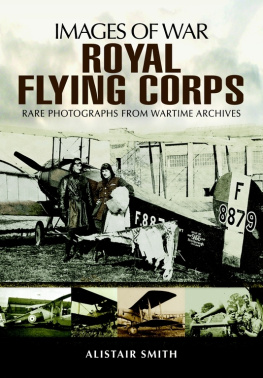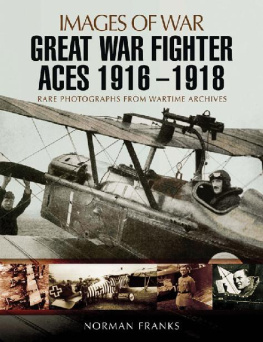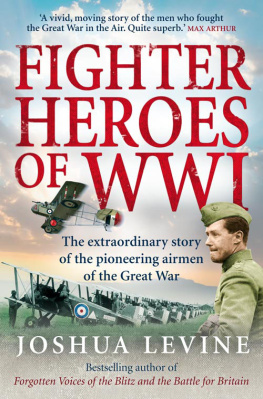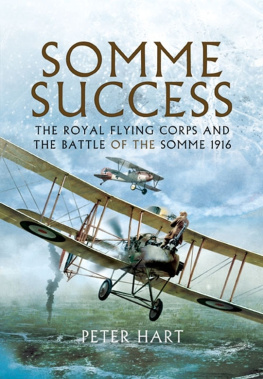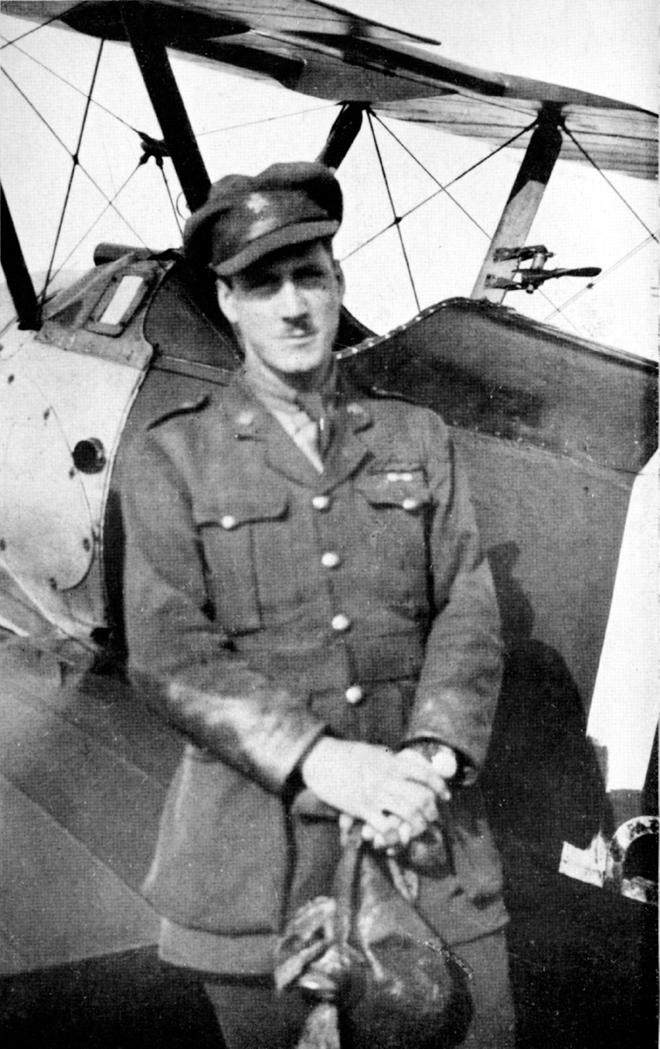
Camel pilot: the author in December 1917
Published by
Grub Street
4 Rainham Close
London SW11 6SS
First published 1968 by Jarrolds Publishers (London) Ltd
Arthur Gould Lee 1968 with the kind permission of David Reed
Felstead
This edition first published 2013
Grub Street 2013
A CIP data record for this title is available from the British Library.
ISBN 13: 9781909166042
EPUB ISBN: 9781909808676
All rights reserved. No part of this publication may be reproduced, stored in
a retrieval system, or transmitted in any form or by any means electronic,
mechanical, photocopying, recording or otherwise, without the prior permission
of the copyright owner.
Cover design and book formatting by Sarah Driver
Printed and bound in Great Britain by MPG Printgroup Ltd, Bodmin,
Cornwall
Grub Street Publishing only uses FSC (Forest Stewardship Council) paper
for its books.
THE PUBLISHER WOULD PARTICULARLY LIKE TO
THANK MICHAEL GIBBS FOR HIS HELP IN BRINGING
THIS NEW EDITION TO PRINT.
To my first wife
Gwyneth Ann
who died long ago
and to whom the letters in this book were sent
in the springtime of life
Heard the heavens fill with shouting, and there rained a ghastly dew
From the nations airy navies grappling in the central blue
Tennyson, Locksley Hall 1842
CONTENTS
ILLUSTRATIONS
AUTHORS NOTE
The letters in this volume were written in France in 1917 when I was a pilot in No 46 Fighter Squadron of the Royal Flying Corps. Together with my flying log-book and diary, and some maps, photographs and official documents, they surprisingly survived thirty years of service life. Their travels included a trip to Istanbul in 1937, then to wartime Cairo, and, two years later, the journey back to England via the Cape. Eventually placed in storage, they were forgotten until a few years ago. Now, after half a century, I have edited them for publication.
Reading through these artless sentences of long ago, so haunted with the ghosts of smiling boys cut down in their prime, I can scarcely believe that the things they recount really happened to me. I cannot recognise myself. Could I ever have taken part in those crazy dances of death three or four miles up in the sky, flying a tiny, fragile, one-gun aeroplane, trying to kill other young men in equally flimsy craft? Could it have been me who so rashly strafed enemy trenches that I was shot down three times in nine days? Surely I could never have enjoyed such luck as to escape bullets and shrapnel by a few inches on more than a score of occasions?
But it all did happen, and in these letters the reader may share a young pilots casually accepted routine of daily hazard. Yet they were not written with an eye to publication: a callow youngsters thoughts did not run in that direction. They were written by a husband of twenty-two to the girl he had impetuously wed in the heady atmosphere of war. They were written to satisfy, first her concern, and second his urge to describe on paper the great, great adventure. They were written in the ardour and immediacy of the hour. They contain neither heroics nor fine writing. They simply record the day-to-day happenings, in the air and on the ground, in a fighter squadron of average renown during eight months of 1917.
Perhaps my greatest surprise on going through the letters, written almost every day, sometimes twice a day, was to wonder at the stoicism of my young wife in accepting without flinching my many descriptions of risky and gruesome happenings, not least of the deaths of pilots in the squadron, some of whom she knew. But she, like the wives of fighting men in every war, quickly learned to live with fear, and without complaint.
The letters are presented as scribbled in the field on a strange assortment of writing pads and official sheets, but because twice as much material was available as I needed to produce a book of reasonable length, ruthless cutting has been necessary. Regrettable casualties among the deletions were accounts of the work of other squadrons, and of the pilots in 46 who were not in my flight. In general, therefore, the letters deal only with my own experiences.
Even these I have had to compress drastically. In addition to excluding passages of a purely personal nature, and pruning the duplications, irrelevancies and commonplaces that inevitably encumber any incautiously written chronicle, I have sometimes removed whole groups of letters that merely described repetitive patrols.
To set against these omissions there are some additions. The names of places and the location of units, of which censorship forbade mention in correspondence, have been inserted throughout. There are occasional extracts from a diary to which were confided both views that might have brought trouble from the censor and subjects too sinister for a young wife to read. There are also linking paragraphs and footnotes, as well as three appendices, to amplify the text, to make good a prentice airmans ignorance of higher service affairs, and to put the reader into the background of political and other contemporary events that affected the work of the R.F.C.
I should perhaps add that the views expressed in these appendices, and in some of the linking paragraphs, are entirely my own, and this is , in which the information on which I base my opinions was obtained in part from official documents only recently made available for public examination.
In the confirmation of dates, names and other factual details, and in the provision of photographs, I have received invaluable help from the following, to whom I render grateful thanks.
Air Vice-Marshal Raymond Collishaw, C.B., D.S.O., O.B.B., D.S.C., D.F.C.; Mrs Charles Courtneidge and Miss Ann Courtneidge; Wing Commander Norman Dimmock, A.F.C.; Marshal of the Royal Air Force Lord Douglas of Kirtleside, G.C.B., M.C., D.F.C.; Marshal of the Royal Air Force Sir Arthur Harris, Bart, G.C.B., O.B.E., A.F.C.; Mrs Cicely Courtneidge Hulbert, C.B.E.; Mr S. B. Jackson, Director, Research and Development, Irving Air Chute of Great Britain, Ltd.; Major Donald MacLaren, D.S.O., M.C., D.F.C.;Mrs Cecil Marchant; Mr Herbert Wilcox, C.B.E.
I have also to acknowledge with thanks the facilities to examine official documents extended by the Keeper of Public Records, and his staff, and by officials of the Air Historical Branch, Ministry of Defence, in particular Mr W. J. Taunton and Mr E. H. Turner. For helpful aid in the search for photographs I must thank Mr Edward Hine of the Photographic Library of the Imperial War Museum, and Miss Ann Tilbury, Photographic Librarian of Flight International.
Acknowledgement is also paid to the following publications, which have been consulted for technical and other factual detail. The War in the Air, Vols iii, iv, v, by H. A. Jones, and three of the Harleyford Publications, Air Aces of the 191418 War, Fighter Aircraft of the 191418 War, and Richtofen and the Flying Circus.
A.G.L.
FOREWORD
The young airmen of the belligerent nations of the First World War, who rode their primitive flying machines high above the land-locked armies in France and Belgium, were unique in the history of mankind, for they were the first mortals ever to give battle in the vast spaces of the sky.
Among them was an even rarer breed, unique in another degree, for they waged their conflicts in a fashion that flourished for but an hour, then was gone for ever. They were the airborne warriors who engaged in single combat, like the knights of mediaeval chivalry, but wielding a winged machine-gun in place of lance and sword.
Next page


